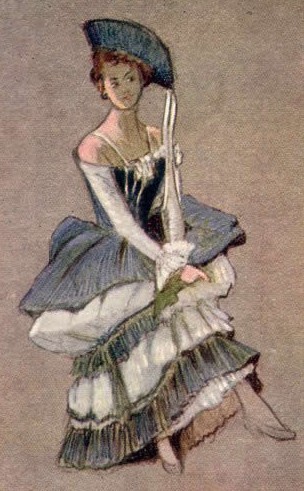
Costume design
Costume design is the creation of clothing for the overall appearance of a character or performer. Costume may refer to the style of dress particular to a nation, a social class, or a period. In many cases, it may contribute to the fullness of the artistic, visual world which is unique to a particular theatrical or cinematic production. The most basic designs are produced to denote status, provide protection or modesty, or provide visual interest to a character.[1] Costumes may be for a theater, cinema, musical performance, cosplay, parties, or other events. Costume design should not be confused with costume coordination which merely involves altering existing clothing, although both create stage clothes.
See also: Stage clothesFour types of costumes are used in theatrical design: historical, fantastical, dance, and modern.[2]
Once the show is designed, it is necessary to plan where the items will be sourced. There are four options. Garments can be:
There are two ways a garment can begin to be constructed; either pattern drafted or draped, and many times both methods will be used together.
Pattern drafting begins by using a set of basic pattern blocks developed from the actor's measurements. They are drawn out on paper first, then transferred to fabric, and sewn together to test fit. [22]
Draping involves manipulating a piece of fabric on a dress form or mannequin that has measurements closely related to the actor's. It is a process that takes a flat piece of cloth and shapes it to conform the fabric to a three-dimensional body by cutting and pinning.
Once constructed, however, the costume has not finished "working." A most important aspect of costumes is the ways they affect actors' performances and function within their settings. The very best costume designers build their original ideas after assessing the visual and spatial conditions of the costumes. [23]
Once constructed, however, the costume has not finished "working." A most important aspect of costumes is the ways they affect actors' performances and function within their settings. The very best costume designers build their original ideas after assessing the visual and spatial conditions of the costumes. [1]